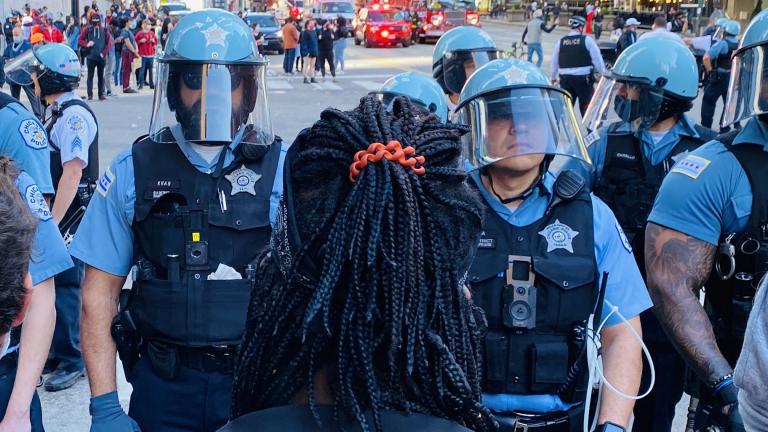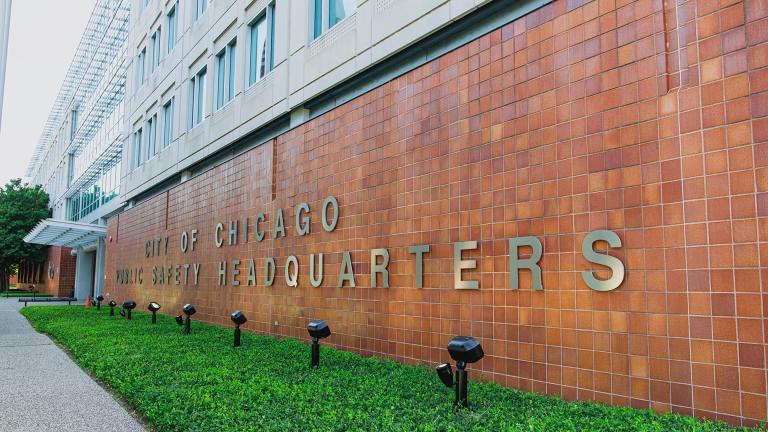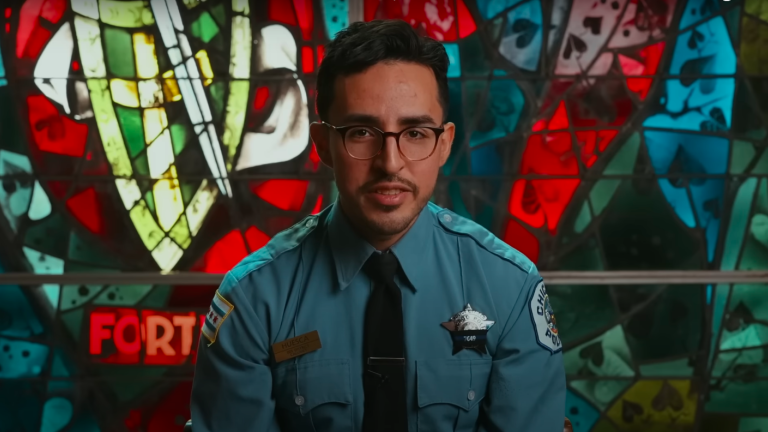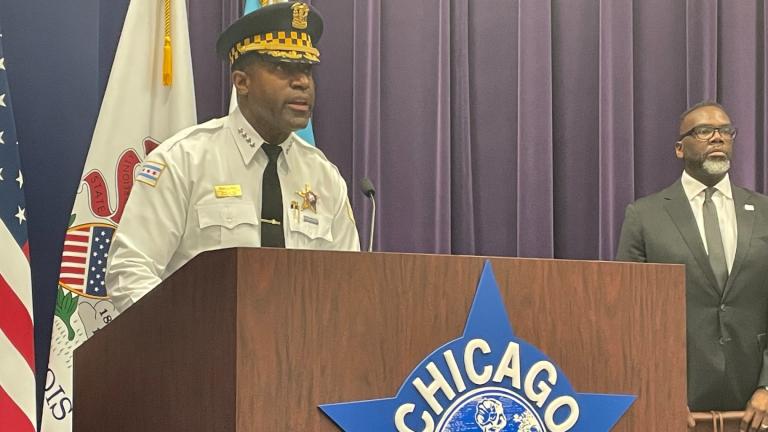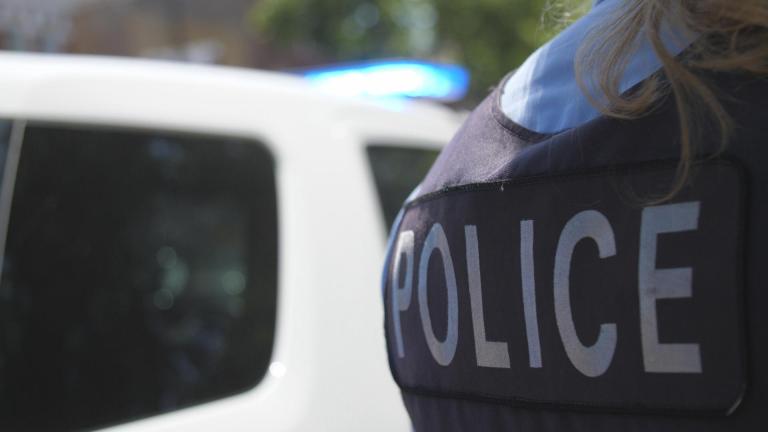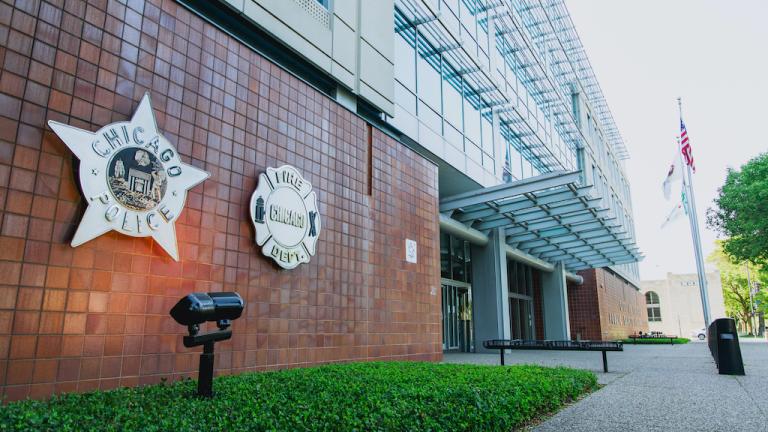Video: Andrew Papachristos, a sociology professor at Northwestern University, joins “Chicago Tonight” to discuss research on police misconduct. (Produced by Blair Paddock)
After more than 200 convictions tied to disgraced former Chicago police Sgt. Ronald Watts were tossed out amid allegations that officers falsified evidence and extorted citizens, researchers at Northwestern University say they’ve found a way to root out other networks of officers potentially engaging in misconduct and criminal behavior.
In a new study published Wednesday, researchers found that police misconduct is often a “group phenomenon” that leads to a disproportionately high number of arrests in minority communities.
“This paper shows we can identify possible crews of bad cops using historical examples, like the Ronald Watts case, as a point of calibration,” Northwestern sociology professor Andrew Papachristos said in a statement. “The Watts case is shaping up to be one of the largest police corruption scandals in U.S. history, and our paper shows what we’re learning here can possibly help us find other groups of criminal oriented cops.’”
Watts and others on his tactical team have been accused of repeatedly extorting residents and guests at the Ida B. Wells housing project for more than a decade in the early 2000s. If they didn’t pay up, the cops would allegedly plant felony-level drug amounts on them and lie about it under oath to secure convictions.
Researchers from the Northwestern Neighborhood and Network Initiative, the Institute for Policy Research, the Department of Sociology at Northwestern and the investigative journalism nonprofit Invisible Institute, have built a statistical model they believe can be used to identify other crews of officers who may be engaged in criminal behavior.
To do so, they analyzed three known CPD crews with a history of misconduct: the Watts team, the Skullcap Crew — five officers accused of excessive and unwarranted force and sexual abuse and harassment against public housing residents in the early 2000s — and the Austin Seven, who were allegedly involved in cases of robbery, extortion and drug dealing in the early 1990s.
In the study, they analyzed the records of some 30,000 police officers from 1971 to 2018 in order to try and find specific groups who have an outsized share of misconduct complaints and share certain characteristics with known crews like the one run by Watts.
Researchers found around 160 potential crews of officers. Those officers make up less than 4% of all rank-and-file Chicago police officers, but account for a disproportionate amount of use-of-force complaints and police-involved shootings.
“Officers in crews were listed on 14.7% of all complaints and 23.8% of all use of force complaints,” the study states. “The accused misconduct associated with crews also seems to be directed more towards Black as compared to Hispanic or white civilians.”
According to the study, these crews generated nearly 18% of all complaints filed by Black Chicagoans and 14% of complaints filed by Hispanic Chicagoans. And these officers were also listed as parties on 27.3% of city awards and settlements in civil lawsuits between 1993 and 2016.
“We know that more than 200 convictions have been overturned because of the Watts case alone,” Papachristos said. “If our results hold, we are talking about possibly thousands of Chicagoans who have been directly subjected to such cop crews — and even more that have been indirectly impacted.”
Despite those findings, the researchers acknowledge there are limitations.
According to the study, of the 29 officers in those three known crews, 15 were identified as crew members using the researchers’ analysis: 12 of the 17 Watts crew members, three of the five Skullcap crew members, but none of the Austin Seven.
While this research is built around the actions of those known crews, there may be others that operate significantly differently, but haven’t yet been detected. The study also doesn’t show how crews grow and develop over time.
But even so, the study has “yielded a tool of immediate utility” to police departments and oversight agencies, according to Jamie Kalven, the founding executive director of the Invisible Institute.
“It is a critical component of an early warning system that enables supervisors to identify groups of officers that have characteristics resembling those of crews of officers known to be criminal,” he said in a statement. “It is important to be clear: Such patterns do not in themselves constitute proof of criminality. They are, rather, prompts for supervisors to investigate.”
Contact Matt Masterson: @ByMattMasterson | [email protected] | (773) 509-5431

